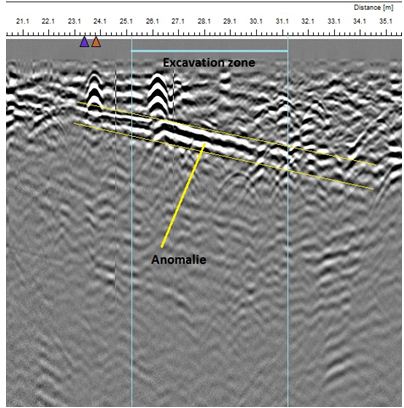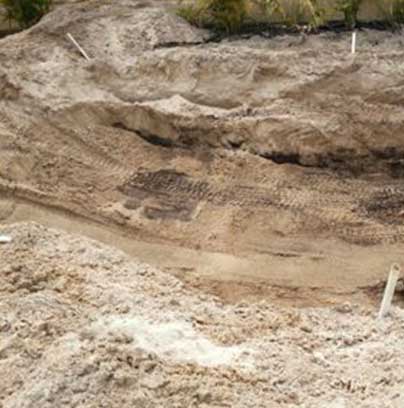Singleton Underground Locating Services
Geological Anomalies in Singleton - Case study
Ground Penetrating Radar
A valuable tool for locating geological anomalies in the sand hills of Singleton, Western Australia
Brief summary
Westscan Pty Ltd of Port Kennedy WA was contacted by Consolidated Enterprises Pty Ltd of Malaga WA to conduct a geophysical survey of property on the Singleton foot hills WA.
The primary reason for the survey is to identify any anomalies that may affect the excavation zone for a swimming pool installation.
The geological investigation conducted for this site used ground penetrating radar (gpr), the same technique employed to investigate landfill layers on civil works development sites.
Local Geology
Coastal ridge of Pleistocene Tamala Limestone – cemented Aeolia nite and shallow-marine carbonate sequences and Safety bay sand – beach ridges & dunes composed of calcareous quartz sand.
Equipment
A Mala GPR unit fitted with 500 MHz shielded antenna and ground vision 2 processing software applications.
Application method
The GPR application for this study is an effective non-destructive method to obtain reliable data and in a relative short time frame. GPR uses high frequency electromagnetic pulses of EM energy to transmit though the grounds surface, the change in dielectric property of the geology or structures below the surface reflect those pulses back to a receiving antenna. The GPR unit travels across the ground in a predetermined sequence for data collection and processing.
Site History
The survey site is a recent housing development area. Property building blocks have been cut and tiered into the surrounding foot hills. No other previous building works have been conducted on the property.
Investigation area and survey procedure
The South East corner of the property was the main focus for the survey. An area of 10m North/South by 5m East/West was scanned. The scan was conducted travelling the N/S direction on the east perimeter first and working across to the west perimeter with spacing’s of 700mm. Than followed by the E/W direction scan starting on north perimeter and working across to the south perimeter with spacing’s of 700mm.
GPR Survey Results
The survey results show the natural profile of the hill prior to development works and the land fill layering added to level the block for building purposes. The GPR radargram (fig.1 below) shows anomalies in the excavation zone at approximately 600mm in depth from the northern end and falling with the natural hill profile.
Conclusion
The use of ground penetrating radar to determine the changes in the ground structure or formations is valuable tool for data collection. The data collected from this site gave the contractor a better understanding of natural profile of the hill side before development works and the land fill layering constructed. The radargram showed anomalies in the excavation zone which informed the contractor of changes to soil structure on the work site.


